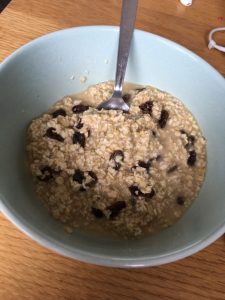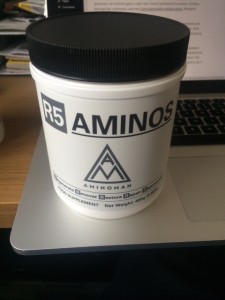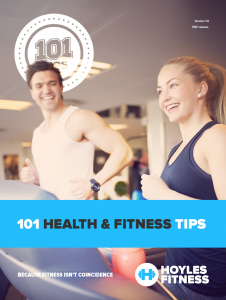Swimrun Race Nutrition Strategy
Swimrun Race Nutrition Strategy
I have a personal training client who competes in Swimrun races. He doesn’t just make up the numbers either – he podium finishes regularly. In this article I’m going to share the swimrun race nutrition strategy we have developed for him to succeed in this tough sport.
I’ll be honest, before I met him I’d never heard of the sport. It turns out it’s pretty hardcore – races are a mixture of fell runs across all kinds of inclines and terrains, interspersed with swims of varying lengths in freezing cold Scandinavian mountain lakes.
Not for the fainthearted.
My main work with him is based around his strength and conditioning, making sure his body is robust enough to cope with the demands of Swimrun races. Alongside that though, we have worked on his race nutrition strategy.
I’m going to share with you the swimrun race nutrition strategy we have him follow before, during and after his races. I’ll also point you towards some of the research that influenced how and why I put together the nutrition strategy the way I did.
Swimrun Nutrition Strategy Considerations
There are a number of demands on the body in Swimrun that you just don’t get from other endurance sports. You could perhaps claim Tough Mudder etc have similar demands (multi terrain, different temperatures) but there are a number of fundamental differences…
- Swimrun races last a LONG time. Races contain around 65km (over 40 miles) of running across rugged mountain terrain and around 10km (6 miles) of swimming in cold lakes.
- The temperature changes are extreme – the participant can go from sweating to shivering and back again 10+ times in a race.
- The water sections mean carrying some of your own food is challenging – there aren’t many pockets in a wetsuit!
- The races are mostly held in Scandinavia (we’re UK based so he travels to events), meaning he can’t always rely on having suitable food choices available.
As a competitor, these demands on the body increase calorie burn beyond the already huge energy requirements just to complete the distance. Add to that the effect of the water removing evidence of mineral loss (we’ll come back to this later) and we have a whole other consideration to take on board.
Before we go any further, the effect of the water has a huge impact on calories burned (therefore increasing the number we need to replace). The reason for this is explained here. The lower the water temperature, the more additional calories are burned. In this case, the water is around 7 degrees Celsius and there are frequent exposures, so any Swimrun nutrition strategy has to take this into account.
Swimrun Race Nutrition Strategy Breakdown
In the case of an overall nutrition strategy, I’m going to separate it into 4 times. They’ve each got their own requirements as I’ll explain – the plan here is to thoroughly prepare for, maintain and recover peak performance ad effectively as possible at every step.
- Night Before
- Pre Race
- During Race
- Post Race
Night Before Racing
The night before a race, he takes 2 multivitamin tablets before bed. You’re going to sweat out a lot of minerals, so get plenty on board. We want to do as much as we can to prevent cramping. Evidence of heat relating to mineral loss can be found in this study.
Taking the minerals the night before will give them plenty of time to be absorbed into your system.
There are hundreds on the market and I’m sure a lot of them are very good. We use these from MyProtein – they represent great value for money and have never let us down.
Race Morning Pre Race Nutrition
The aim for the morning pre-race nutrition strategy is to fuel for the day ahead. We want high carbs (and the right mixture of carbs) at this point, alongside plenty of fluids. The evidence supporting pre-endurance event carbohydrates is strong and has been consistently recommended for decades.
If you are travelling for your Swimrun race, you’ve got to control all of the elements you can. I understand that you won’t always know what kind of breakfast you are going to have access to, so in that case, make sure you are prepared regardless by taking your own.
Here’s what I suggest…
Apple and raisin porridge – it’s easy to make, requires no cooking or heating and you can transport all of the ingredients easily. It also contains an excellent mix of fast and slow release carbohydrates, ideal for a Swimrun race…
Put a 2-3 large mugs of dry oats and a handful of raisins into a tuppaware box. These are the dry ingredients.
Take a 500ml bottle of quality apple juice (Coppella is decent) and pour the apple juice over the oats and raisins so you just cover them. Leave it to soak for 10-15 minutes, stir and eat.
It’s super high carb, mostly slow-release carbs thanks to the oats but also the raisins and apple juice are simple carbs so will provide a quick energy boost.
This is a doddle to travel with – the oats and raisins can be mixed at home and put in a tuppaware box. The apple juice can be taken in your bag.
Eat a banana or two with it and take another couple of multivitamins – extra energy and minerals.
Hydration: Start early and sip water throughout the morning – you don’t want to glug down 500-750mls just before you start your race. Spread your water intake across 90 minutes or so, which means you’ll have time to hydrate fully and won’t have a load of water swishing around your stomach in one go.
Aim for around 500mls in the 90 minutes before the race. The rest of the water you will take on during the event where you should also consume a carbohydrate/electrolyte powder to help replace lost fluids and minerals.
15 minutes before the start of a race, have a strong coffee (add sugar if you like – you’ll be burning it!)
Caffeine has been shown to improve endurance event performance and ideally is taken within 60 minutes of the event starting. By aiming for caffeine intake within 15 minutes of the start time, we are allowing time for the caffeine to be effective yet maintain its effects for longer into the event.
During Swimrun Race Nutrition
The mistake a lot of people do is they cram in gel after gel during the race. That’s fine, but as an aerobically-trained athletes, you’re unlikely to run out of fuel too soon. Your body will be well trained to use fat as a back up substrate (fuel), so we use carbs as a primary fuel.
There’s a place for gels, but not too soon and not too frequently.
During the race, ESPECIALLY in hot weather I’d be looking for you to replenish fluid and salts as a priority. Our preferred method is with electrolyte drinks and there is a significant body of evidence suggesting this is a good idea. In terms of fluid intake during the race, we aim for around 600mls-1 litre per hour.
When it comes to electrolyte drinks I’m sure there are lots of good ones, but we typically stick with the MyProtein one because like the multivitamins, it hasn’t let us down.
Electrolyte drinks should be consumed during the race, but given the nature of Swimrun races you’d need a higher salt content. Something like salted peanuts or crisps are a perfect compliment to the electrolyte drinks because they have a high salt content and decent calorie numbers.
They’re also easy to carry because they come in a small, watertight bag.
In my client’s case, we look for him to take on one of these bags of crisps/nuts roughly every 60-90 minutes depending on how much you he is sweating. More sweat = more frequent salt intake.
If you’d like to take a gel on as well at the same time, go ahead – just don’t rely on gels solely because they are essentially almost pure sugar and unlikely to replenish sodium, potassium, magnesium and chloride. Rely on electrolyte drinks to do a lot of that work for you.
Now, back to effect of water removing evidence of mineral loss…
In the heat of the moment, an athlete may not realise quite how much they’ve sweated during the runs because the swim will wash away the salt from the skin. This means the evidence of the sweating and they reminder to replace salts lost has gone.
Additionally, the water has the effect of reducing skin temperature so the athlete won’t feel hot, even though moments earlier they may have been sweating profusely. This can lead you to wrongly believe you’re not sweating much – you may even feel cold immediately post swim. It’s vital to remember that this will change very quickly though.
Replacing lost minerals will be crucial – if they aren’t replaced the athlete will suffer severe cramps. Evidence suggests low levels of potassium and magnesium play a role in muscle cramps, so it’s important these minerals are replaced.
Especially important in the swimrun world is the replenishment of salts even when you feel fine – you’re in water, so your body temperature will be reduced every time you swim so you may not be sweating so much. Don’t be fooled by this, you’re still using minerals during the muscle contraction so sweating isn’t your only method of mineral use.
Remember, you’ll be washing the sweat off your skin so may not be aware of the real amount you’re sweating.
IMPORTANT POINT!
Sports nutrition is different from day to day nutrition. A simple rule to live by in sports nutrition is this…
EAT FOR WHAT’S AHEAD OF YOU, NOT FOR WHAT YOU’VE DONE
If you get to a point in a race where your energy crashes, it’s too late – your race performance is compromised beyond reasonable repair.
Your strategy should be to fuel your way through the event, not try to replace lost energy part way round. Don’t neglect your food, electrolyte, gels and crisps/nuts during the event event if you don’t think you’ll need them – you can’t risk running out of energy in the event.
Think of food intake as little and often as you go – don’t miss a couple of food stations and binge when you hit the next one because it’ll see blood diverted to the digestive tract and your energy will be crashing before you know it.
Remember, you want small food intakes at every available point.
Post Swimrun Race Nutrition Strategy
If you’ve fuelled correctly, you won’t really need to replace lost carbs – you would have over-consumed carbs during the morning and throughout the race to keep you fuelled.
Instead, the priority should be to replace lost fluids and to stimulate the repair of tissues damaged during the event.
We must prioritise damage repair because all of the running, swimming, scrambling etc will have taken it out of your body – there’ll be muscle damage, connective tissue damage and possibly a little bone damage (it sounds dramatic, but it’s not dangerous damage, it just needs a little repair and recovery).
I like my client to consume some BCAA’s at this point, with my preferred brand being R5 Amino Acid. It also helps promote deeper, more resultful sleep.
We base post-race nutrition strategy around a high protein intake from a good quality source such as meat, fish, eggs etc. Additionally, my client consumes a lot of vegetables for the vitamin and mineral benefits.
I’d also supplement before bed with a multivitamin and a good ZMA (zinc and magnesium) tablet. Again, we use the MyProtien ZMA tablet…
After eating, we use proactive measures of recovery – sleep and sauna use.
Sleep as long and as deeply as you can and if you have access to one, jump in a sauna. Stimulate circulation and blood flow and kick-start recovery. This extra intervention is worth its weight in gold – I’m a HUGE proponent of sauna use for exercise recovery.
Swimrun Race Nutrition Strategy Personalisation
I want you to understand that this strategy has been tested and tweaked based on what we have learned works on doesn’t with my client – it may be different for you.
With nutrition, it’s important to realise that there isn’t a one-size-fits-all approach, so experiment with your version of this swimrun race nutrition strategy in your training before applying it to a race environment.
If nothing else, this swimrun race nutrition strategy post will put you on the right tracks and show you things you may not have considered previously. Hopefully, it’ll see you hitting PB’s and picking up medals too!
By the way, if you subscribe to the Hoyles Fitness mailing list you’ll receive a free eBook containing 101 Health and Fitness Tips, plus offers and news exclusive to Hoyles Fitness subscribers. Click the image below to download…






